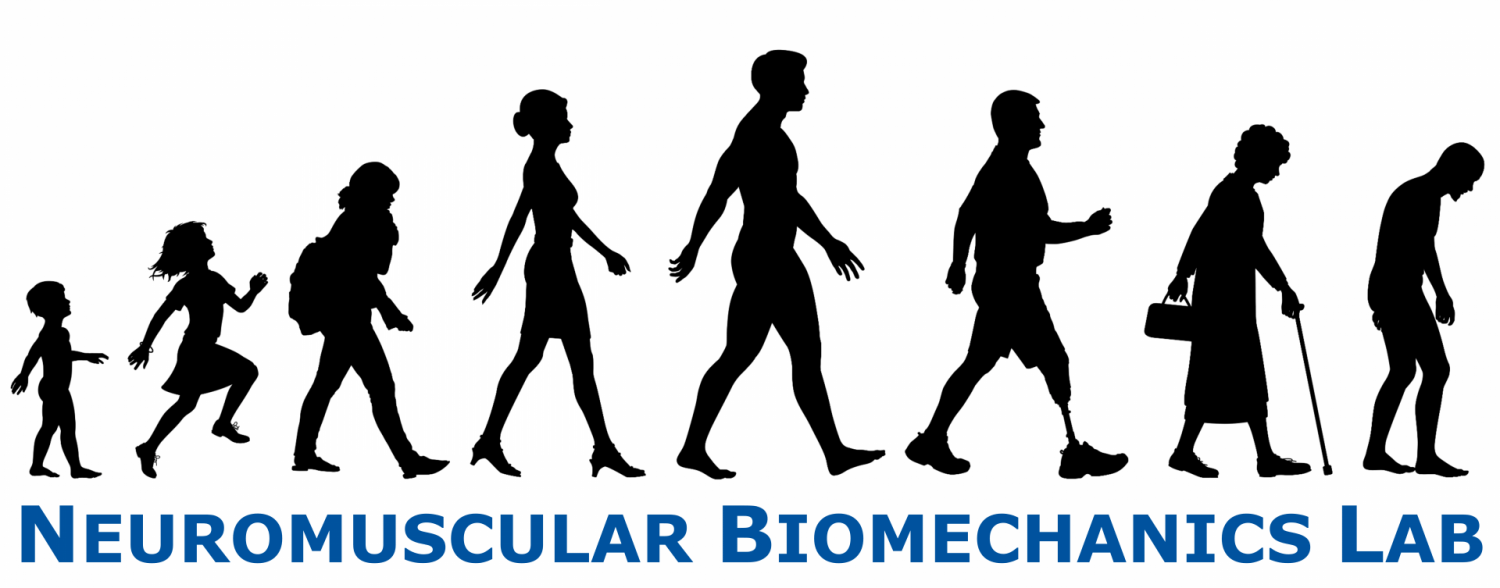Current experiments involve three-dimensional kinematic and kinetic analysis and EMG recording during treadmill and overground gait. State-of-the-art modeling and optimization techniques are used to develop simulations based on experimental data. Ongoing research projects are related to:
1) Muscle deficits and subject-specific interventions for post-stroke hemiparetic gait
 Over the last decade, we have investigated the relationship between altered muscle morphology, muscle activation and muscle coordination during walking after stroke. To achieve these goals, we have implemented a robust Research Core to facilitate and track subject recruitment and eligibility, developed novel imaging tools using MRI and ultrasound to compare paretic and non-paretic muscle atrophy, (3) implemented new methods to estimate central activation ratio and maximal force generating ability, (4) applied custom-designed hardware and software in post-stroke intervention studies involving FES, treadmill training and robotics, (7) integrated OpenSim with EMG-driven modeling to enhance subject-specific simulation capabilities, (8) used subject-specific simulations to identify muscle coordination and compensatory strategies, (9) established a database of subject-specific muscle, gait and clinical data, and (10) established an effective and productive team of collaborators engaged in stroke-related studies.
Over the last decade, we have investigated the relationship between altered muscle morphology, muscle activation and muscle coordination during walking after stroke. To achieve these goals, we have implemented a robust Research Core to facilitate and track subject recruitment and eligibility, developed novel imaging tools using MRI and ultrasound to compare paretic and non-paretic muscle atrophy, (3) implemented new methods to estimate central activation ratio and maximal force generating ability, (4) applied custom-designed hardware and software in post-stroke intervention studies involving FES, treadmill training and robotics, (7) integrated OpenSim with EMG-driven modeling to enhance subject-specific simulation capabilities, (8) used subject-specific simulations to identify muscle coordination and compensatory strategies, (9) established a database of subject-specific muscle, gait and clinical data, and (10) established an effective and productive team of collaborators engaged in stroke-related studies.
2) Development and Testing of a Tendon-Driven Exosuit for Upper Extremity Assistance
Each year, 795,000 people suffer a stroke in the United States. A major complication of stroke is hemiparesis, which inhibits the ability to perform activities of daily living. Wearable and practical for daily living, an exosuit is a device designed to help people with disabilities such as these by providing mechanical support to compensate for diminished muscular capacity. Exosuits that target the shoulder are often designed to provide support for the arm against gravity, the largest force that the arm must regularly overcome. Many exosuits have used tendon-driven actuation to assist the arm against gravity. These exosuits have shown the ability to alleviate muscular demand through soft and lightweight actuation. However, it is not known how the placement and lines of action of force-providing tendons impact the kinematics and physiological response of the user. The objective of this project is to characterize the mechanics of human-exosuit interaction, which will drive the development of a tendon-driven exosuit for assisting shoulder motions. Through this project, we seek to achieve the following aims:
- Characterize force transmission of synthetic tendon configurations
- Optimize actuator properties and insertion points to maximize functional utility
- Evaluate physiological effect of exosuit on arm
As part of this effort, the Henswear Group has been formed by researchers and partners with expertise in rehabilitation, materials science, and fashion to collaboratively research and develop wearable technology.
3) Simulation-based analysis of muscle coordination in healthy and pathological gait
 The goal of this work is to develop subject-specific musculoskeletal modeling and simulation techniques to understand available compensatory strategies for altered muscle morphology and function following stroke, and identify which stroke survivors are likely to benefit from specific types of intervention. Experimental measures are used to deduce information about muscle activation impairment, atrophy, neural control, strength and movement patterns and incorporated into subject-specific models. These models are used to understand available compensatory strategies for altered muscle morphology and function following stroke, and can be related to clinically relevant outcomes. Because forward dynamic models offer a deterministic framework to explore relationships between muscle function and resultant movements, we wish to identify changes underlying effective responses to intervention and ultimately predict which stroke survivors are likely to benefit from functional electrical stimulation of key muscles or other interventions.
The goal of this work is to develop subject-specific musculoskeletal modeling and simulation techniques to understand available compensatory strategies for altered muscle morphology and function following stroke, and identify which stroke survivors are likely to benefit from specific types of intervention. Experimental measures are used to deduce information about muscle activation impairment, atrophy, neural control, strength and movement patterns and incorporated into subject-specific models. These models are used to understand available compensatory strategies for altered muscle morphology and function following stroke, and can be related to clinically relevant outcomes. Because forward dynamic models offer a deterministic framework to explore relationships between muscle function and resultant movements, we wish to identify changes underlying effective responses to intervention and ultimately predict which stroke survivors are likely to benefit from functional electrical stimulation of key muscles or other interventions.
4) Interactions between cognitive function and gait performance
Although historically considered an automatic process, gait control has been shown to consume attentional demands, supported by the concept of dual-tasking with a motor and cognitive challenge. Identifying the impact of cognitive challenges on motor tasks in healthy younger and older adults could detect increased fall risk and lead to prevention strategies for at risk populations, such as the elderly or cognitively impaired. Cognitive function during motor tasks also has important implications for rehabilitation where information about performance must be relayed and interpreted by the user. The objective of this work is to (1) quantify the interaction between motor and cognitive performance and (2) use this information to design optimal biofeedback systems.

